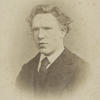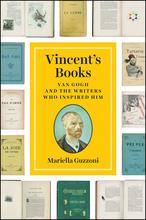More about Tree Roots
- All
- Info
- Shop

Contributor
Vincent Van Gogh’s life has been documented, studied, romanticized, and analyzed by so many that you’d think we’d be sick of talking about him. But we just can’t get enough.
Tree Roots is the last painting by Van Gogh. The painting is considered the artist’s farewell to the world. Known to struggle with bouts of depression, this painting of gnarled and twisted roots and branches expresses his anguish. Van Tilborgh, a researcher at the Van Gogh Museum mentions the slope and the roots might refer to the artist’s “falling” state of mind. This painting also shows a move towards a more abstract composition. Who knows which path he might have taken if he had continued painting?
Van Gogh’s untimely death came at the age of 37, only ten years into his short stint as an artist. Even his death is a hot topic. Most, including the Van Gogh museum, support the story that he died after an attempted suicide. The artist had expressed suicidal thoughts in many of his letters to family members, including his brother, Theo, and sister, Wil. On the day of his death, the Ravoux family anxiously wondered why the artist, known to follow a routine, hadn’t returned to the inn for dinner. Around 9 pm, he returned holding a wound. He confessed he had fainted after shooting himself earlier that day, most likely with the innkeeper’s stolen gun. He died soon afterwards.
Steven Naifeh and Gregory White Smith believe that it’s more likely the artist was killed by two teenagers with a malfunctioning gun. According to Naifeh and Smith, Van Gogh was known to go drinking with the two teenagers in town. One of them was apparently dressed as a cowboy that day. Why was Van Gogh day drinking with a couple of village teenagers? We’ll have to read Naifeh and Smith’s biography on Van Gogh to find out. As for the cowboy outfit, we’re going to have to chalk that up to teenage eccentricity for now. The outfit, however, does put the gun in context. Naifeh and Smith claim one of the teenagers, in a drunken state, accidentally shot the artist and he took the blame to protect them. I imagine this account as a drunk version of Clint Eastwood’s famous scene from The Good, The Bad and The Ugly. Van Gogh is obviously Clint Eastwood, but things just go a bit differently in this case. The two authors speculate Van Gogh was motivated by brotherly love to accept his death. Feeling guilty for his dependence on his younger brother Theo, he figured this would make him less of a burden.
At his funeral, Van Gogh was surrounded by artists, friends, family, and his favorite yellow flowers. I think we all can agree that Van Gogh’s untimely death was unfortunate and he could have painted us so many more masterpieces. The two accounts of his death vary dramatically, but the common theme here seems to be the gun in unstable hands. As my friend’s grandmother’s favorite toast goes, “No more guns!”
Sources
- Gompertz, Will. “Van Gogh did not kill himself, authors claim.” BBC News. October 17, 2011. http://www.bbc.com/news/entertainment-arts-15328583
- Sooke, Alastair. “The Mystery of Van Gogh’s Madness.” BBC Culture. July 25, 2016. http://www.bbc.com/culture/story/20160722-the-mystery-of-van-goghs-madn…
- “The End of a Difficult Road.” Meet Vincent. Van Gogh Museum. Accessed: October 17, 2017. https://www.vangoghmuseum.nl/en/stories/the-end-of-a-difficult-road
- Van Tilborgh, Louis. “Tree Roots, Van Gogh's Last Painting.” Van Gogh Museum Shop’s Youtube Channel. 27 July 2016. www.youtube.com/watch?v=A4gBGwkiGBo.
















